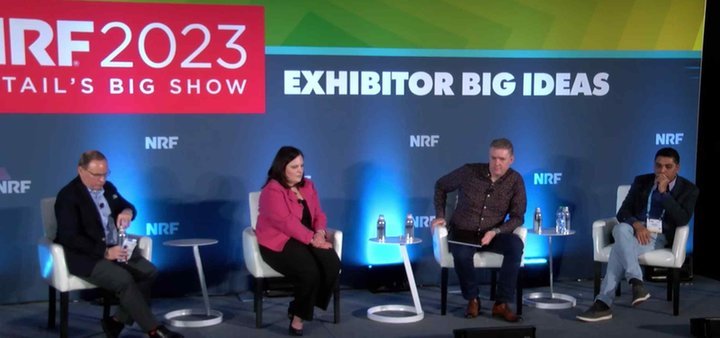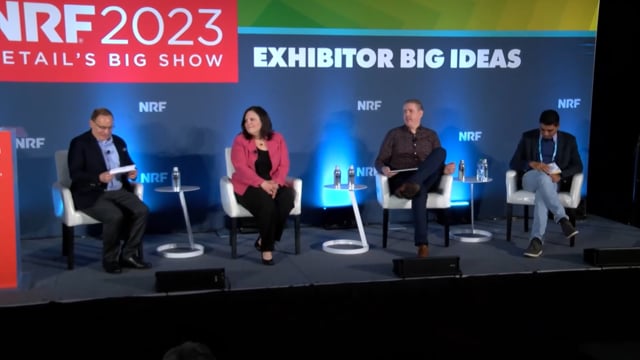Digital Twins: Unlocking the Retail World’s New Superpower
Produced by Dell
Andrew Laudato, Executive Vice President & Chief Operating Officer at The Vitamin Shoppe moderated an exciting panel discussion on digital twins and their impact on retail and supply chain. A digital twin is a virtual replica of a physical entity, product, or service, with data streamed from sensors and other devices in real-time. It's a computer-based simulation of something in the real world. Digital twins have been around for a long time in industries such as aerospace. For example, GE uses digital twins to model products like jet engines and wind turbines. However, digital twins are relatively new to retail. It enables retailers to simulate different scenarios, optimize processes, and enhance customer experiences. In this discussion, speakers talked about the benefits of digital twins in retail and how, when used properly, we could predict the impact of changes more accurately and cost-effectively than piloting changes in a physical environment.
Mason Sheffield of Lowe's discussed the impressive use of digital twins at Lowe’s and gave examples of digital twins used in Lowe’s, such as product simulations and store layouts. They have this up and running and are actively testing changes to store operations virtually. While Lowe’s has already reaped benefits from the technology, they believe there are many more use cases and opportunities ahead of them as they continue to exploit this technology. Sasha Pailet Koff of Dell and Anand Muralidaran of NVIDIA talked about the tools available to implement digital twins in retail now. Edge computing and AI processing technology supplied by Dell and NVIDIA make implementing digital twins accessible to small and medium-sized retailers. Finally, each of the panelists gave advice to the audience on how to get started with digital twin technology and the salient point was to get a handle on the data you currently have in your business and use that data as a basis to build your model. Overall, the discussion highlights the potential of digital twins to transform the retail industry, improve supply chain management, and enhance customer experiences.
Mason Sheffield, Sr. Director of Creative Technology, Lowe’s Innovation Labs, Lowe's believes that the digital twin is not just a visual representation but a powerful platform for simulation and process optimization that allows one to experience data in new ways and go beyond traditional analytics dashboards. Mason shared Lowe's digital twin efforts, which initially focused on visualizing individual products people could buy on Lowe's.com and have now expanded to representing their entire physical stores as digital twins. Using Omniverse, a 3D graphics collaboration platform created by Nvidia, and the Pixar USD format, Lowe's was able to build a 3D model of their stores, including all of their racks, products, signage, and metadata about those products. By combining this model with streaming sensor data, Lowe's was able to compress the timeline from weeks or months to real-time and unlock what's possible with a digital twin.
Mason emphasized the importance of having a unique position to leverage data in a company's warehouse management systems and having a combination of developers with graphics backgrounds to explore the possibilities of digital twin technology. He advised businesses to gather the resources they have and talk to partners who are potentially supplying the products or equipment, as they are trying to answer the same questions. There are also scanning services like Matterport that can capture physical locations and start to catalog them into something that can represent a digital twin.
Mason also highlighted the importance of sharing a grand enough vision for a digital twin that would get people thinking beyond the next quarter for business. He said that Lowe's was investing in data security, data governance, and helping people understand the vision. By running simulations thousands of times overnight on models of all stores, Lowe's was able to learn quickly than ever before, have a rich simulation, and a virtual twin of stores, which allows them to optimize their processes and improve their customer experience. The digital twin is a game-changer for businesses that want to stay ahead of the curve, and companies like Lowe's are leading the way in its implementation.
Sasha Pailet Koff, SVP, Global Ops & Digital Supply Chain Data, Analytics & Automation, Dell Technologies, spoke about digital capabilities and the importance of the connection between supply chain and commercial teams in supporting the customer experience. Sasha explained that Dell has two components of digital twin that it thinks about: a digital representation of the company's ecosystem from raw material suppliers to consumers and the potential future supply chain arrangements that would meet a customer's needs. Sasha emphasised the need for connectivity between supply chain and commercial and retail teams, and the importance of data sharing across ecosystems to meet customers' real-time information demands, such as product availability and the right place to obtain the product. Koff discussed the significance of digital twin and its acceleration of dependency due to the shift in customer preferences towards omni-channel experiences. Sasha also highlighted the benefits of the broadening of information sharing across partners, who may have been competitors in the past.
Anand Muralidaran, Global Biz Dev Head - Retail, CPG and QSR, NVIDIA, spoke about the impact of the Metaverse and how it can transform industries. He discussed the concept of 'try before you buy', which is prevalent in many industries such as product design and even automobiles. However, this has not been possible in retail, supply chain, and logistics until now. Using Omniverse, it's now possible to simulate stores, warehouses, and supply chains, and learn and experiment from them before starting a store, gaining efficiencies of scale. Anand highlighted the difference between digital twins and Omniverse, stating that while digital twins have been around for 20 years, Omniverse offers physically compliant simulations, meaning that if a bottle drops, it will break as it is supposed to. Anand also discussed USD (Universal Scene Descriptor), which enables the connection between multiple metaverses. He believes that the Metaverse will eventually impact every moving object and interaction and experience, including robots. Anand ended his talk by saying that the Metaverse can create new business models, and that Nvidia is working with partners to make this a reality.





